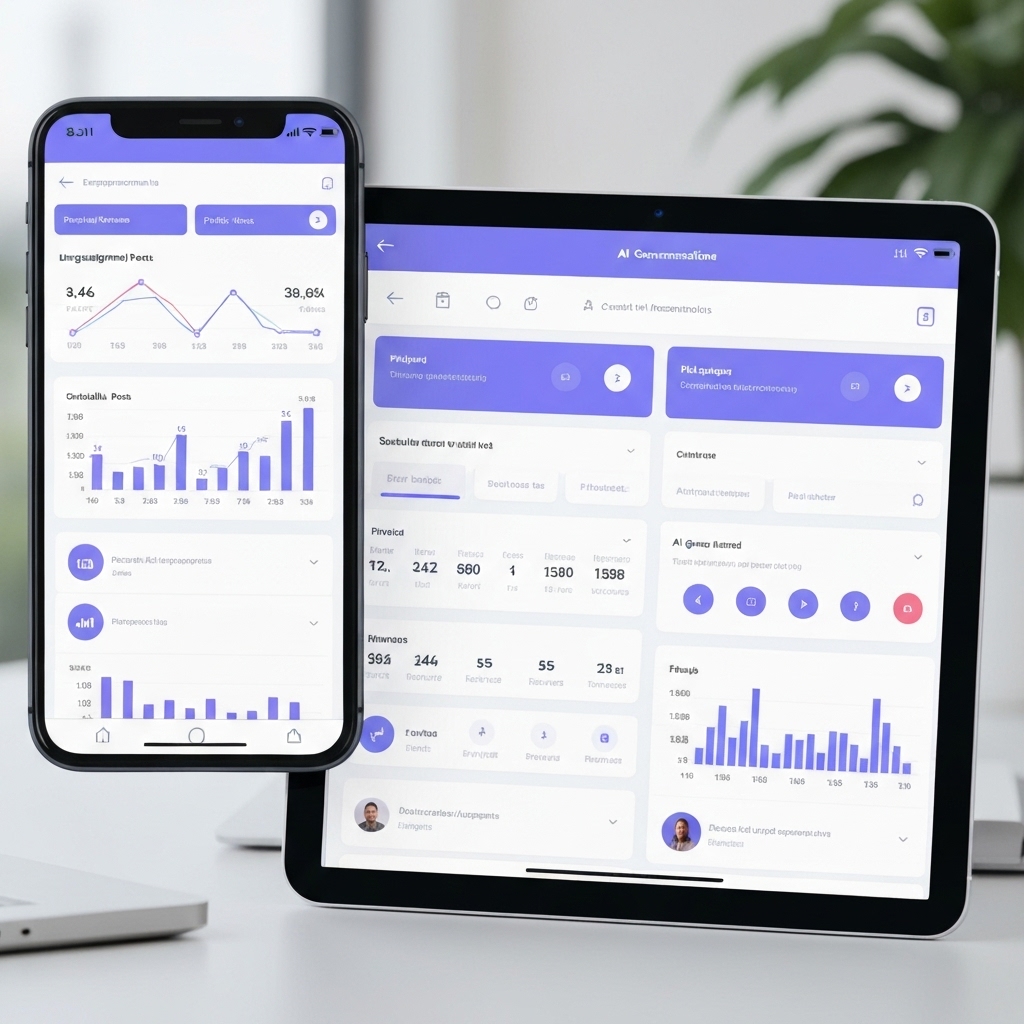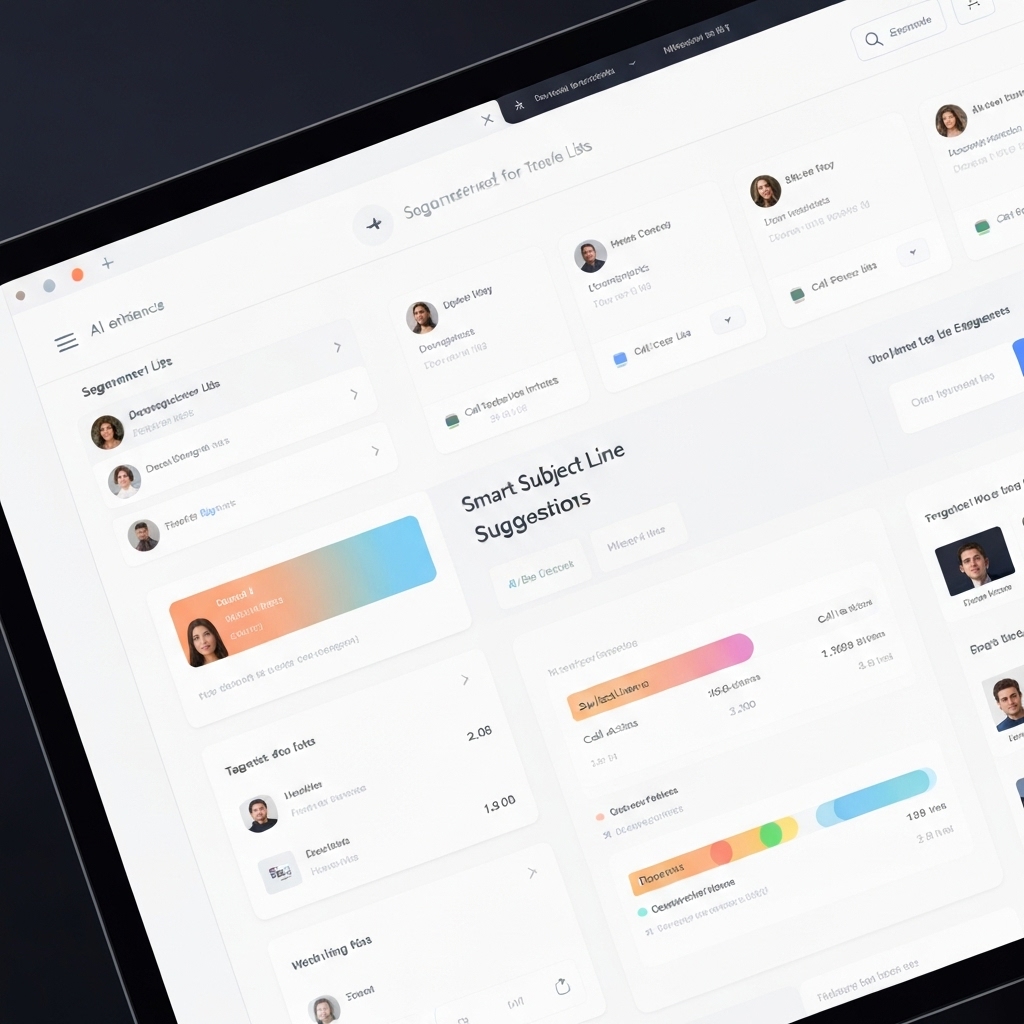AI Tools for Small Business Marketing Beginners: A Simple Guide to Getting Started
AI Tools for Small Business Marketing Beginners: A Simple Guide to Getting Started
Artificial intelligence no longer requires advanced technical skills or a large budget to use effectively. For small business owners just starting with marketing, AI tools can automate repetitive tasks like scheduling social media posts, generating email content, and analyzing customer behavior. Platforms such as HubSpot offer user-friendly AI features that help personalize customer interactions and improve campaign performance without requiring prior experience.
One of the most accessible applications of AI is in content creation. Tools like Copy.ai and Jasper use natural language processing to generate blog ideas, product descriptions, and ad copy in seconds. These platforms learn from user input and refine suggestions over time, making them increasingly accurate. According to Content Marketing Institute, AI-assisted content creation can reduce writing time by up to 50%, allowing small teams to focus on strategy and engagement.
Customer service is another area where AI simplifies operations. Chatbots powered by AI, such as those integrated into Zendesk, can handle common inquiries 24/7, freeing up valuable time for business owners. These chatbots use machine learning to understand and respond to customer questions more accurately over time, improving satisfaction and response rates without additional staffing.
With pricing models that often include free tiers or low-cost entry plans, AI tools are now within reach for even the smallest businesses. By starting with one or two focused applications—like email automation or social media management—owners can gradually build confidence and expertise. As adoption grows, resources from trusted sources like Small Business Trends offer ongoing guidance to help navigate new tools and maximize return on investment.
Why AI Matters for Small Business Marketing
AI tools have revolutionized the way small businesses operate by significantly reducing the time and effort required for everyday tasks. By automating repetitive processes such as scheduling social media content or managing customer inquiries, AI allows teams to focus on strategy and creativity instead of manual labor. This efficiency gain is especially valuable for small businesses with limited staff and resources, enabling them to maintain a consistent online presence without overextending their workforce.
Beyond automation, AI delivers data-driven insights that were once accessible only to large enterprises with dedicated analytics teams. Tools like predictive analytics and customer behavior modeling help small businesses understand their audiences better and make informed decisions. Platforms such as Google Analytics now integrate AI features to uncover trends and recommend actions, leveling the playing field in competitive markets.
Personalization is another area where AI makes a significant impact. Email marketing platforms powered by AI can segment audiences, optimize send times, and tailor content to individual preferences, leading to higher engagement rates. Services like Mailchimp use machine learning to improve campaign performance over time, helping small businesses build stronger customer relationships even on tight budgets.
With these capabilities, AI empowers small businesses to compete effectively despite having fewer resources. As the technology becomes more accessible and affordable, its adoption is no longer a luxury but a strategic necessity for growth and sustainability in today’s digital economy.

Top AI Tools for Content Creation
AI writing assistants such as Copy.ai and Jasper are transforming the way content creators develop digital material. By leveraging advanced language models, these platforms can quickly generate high-quality blog ideas, product descriptions, and advertising copy based on minimal input. Users simply provide a short prompt or outline of their needs, and the AI produces multiple variations that align with their brand's tone and messaging.
These tools are especially valuable for marketers and small business owners who need to maintain a consistent content schedule without dedicating excessive time to brainstorming or drafting. With features like tone customization and content templates, AI assistants streamline the creative process while maintaining a level of originality and relevance. This efficiency allows teams to focus more on strategy and audience engagement rather than content production bottlenecks.
Moreover, AI-generated content can be refined and repurposed across multiple platforms, from social media to email campaigns, increasing overall reach and consistency. While human oversight remains essential for quality control and authenticity, AI writing tools serve as powerful collaborators in the content creation workflow. For those looking to scale their output without sacrificing quality, integrating an AI assistant can be a strategic advantage.
Automating Social Media with AI
Modern social media management platforms such as Buffer and Hootsuite have evolved by integrating artificial intelligence to streamline content strategy. These tools now analyze vast amounts of engagement data to suggest the best times for posting, significantly increasing the likelihood of audience interaction. By leveraging AI, they minimize guesswork and help marketers make data-driven decisions that enhance reach and visibility across platforms like Instagram, Twitter, and LinkedIn.
Beyond timing, AI features in these platforms can recommend relevant content topics based on trending discussions and user interests. For instance, Hootsuite’s Insights tool uses natural language processing to monitor brand mentions and industry keywords, offering actionable suggestions. Similarly, Buffer’s AI-powered composer assists users by generating ready-to-use captions tailored to tone and audience preferences, saving time while maintaining a consistent brand voice.
One standout capability is the use of AI to analyze audience behavior patterns over time. Tools like Lately employ machine learning to determine when specific audience segments are most active and receptive, automatically scheduling posts for peak engagement. This level of automation ensures a steady online presence without requiring daily manual input, making it ideal for busy professionals and small teams managing multiple accounts.
By combining scheduling precision with intelligent content creation, AI-powered social media tools are transforming how brands maintain consistency and grow their digital footprint. As these technologies continue to advance, they offer scalable solutions for improving engagement while reducing the workload traditionally associated with social media management. For more information on AI in marketing, resources like Marketing AI Institute provide valuable insights into emerging trends and applications.

Email Marketing Powered by AI
Mailchimp and Brevo (formerly Sendinblue) leverage artificial intelligence to enhance email marketing performance by optimizing key engagement factors such as subject lines and send times. By analyzing vast amounts of user engagement data, these platforms can predict which subject lines are more likely to resonate with recipients, increasing the chances of an email being opened. This AI-driven approach removes much of the guesswork for marketers, enabling them to craft more compelling messages based on data-backed insights. For more information on how Mailchimp uses AI, visit Mailchimp's official website.
In addition to optimizing content and timing, both platforms employ machine learning algorithms to automatically segment audiences based on behavior, preferences, and engagement history. This ensures that emails are delivered to highly targeted groups, improving relevance and conversion rates. Automated segmentation allows businesses to send personalized campaigns without manually sorting contact lists, saving time and increasing efficiency. Learn more about Brevo’s automation features at Brevo's official site.
The combination of intelligent send-time optimization, dynamic subject line suggestions, and automated audience segmentation enables marketers to achieve higher open and click-through rates. These AI-powered capabilities are especially valuable for small to medium-sized businesses that may lack dedicated marketing analysts. As AI continues to evolve, tools like Mailchimp and Brevo are setting new standards for accessibility and effectiveness in email marketing.

Conclusion: Start Simple and Scale Smart
Starting with just one AI tool can make a significant difference in your marketing efforts without overwhelming you. Focusing on a specific area, such as content creation or social media management, allows you to build confidence and expertise gradually. Platforms like Canva and Buffer offer intuitive interfaces and free trials, making them ideal for beginners looking to experiment with AI-powered design or scheduling tools.
As you become more familiar with how AI enhances your workflow, you can thoughtfully expand into other areas—like email marketing automation with tools such as Mailchimp or SEO optimization using Ahrefs. The key is progression, not perfection. Many of these platforms use machine learning to provide actionable insights, helping even novice marketers make data-driven decisions.
AI doesn’t replace creativity or strategy; it amplifies them. By automating repetitive tasks, AI frees up time to focus on crafting compelling messages and building authentic audience connections. With consistent practice and the right support, small steps can lead to measurable improvements in engagement, reach, and conversions.
Ultimately, success in AI-driven marketing isn’t about mastering every available tool—it’s about leveraging a few effectively. As your skills grow, so will your ability to run professional-grade campaigns that deliver real business outcomes. For more guidance on getting started, resources like HubSpot’s marketing blog offer practical tips and case studies to inspire your journey.
